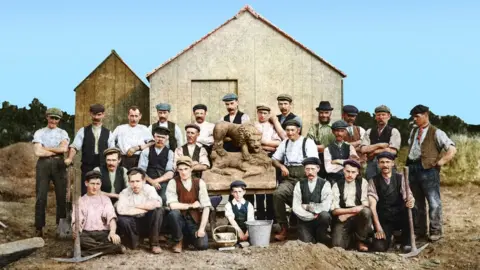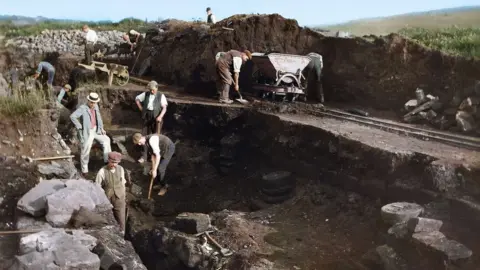Identities of mystery Corbridge Roman excavators sought
 Fairless Family
Fairless FamilyHistorians are hoping to identify the labourers who unearthed the remains of a Roman town more than 100 years ago.
English Heritage has released colourised photographs of the Edwardian excavators of the Coria Roman settlement at Corbridge, Northumberland.
Research has already identified 11 of the amateur archaeologists who worked at the site from 1906 to 1914.
Curator Dr Frances McIntosh said the excavators' work was "phenomenal".
She said many of those who did the digging had no experience of archaeology having worked as brick makers, miners and gardeners.
 English Heritage
English HeritageExcavation of the most northerly town of the Roman Empire was overseen by Oxford professor Francis Haverfield who was one of the first people to undertake a scientific study of Roman Britain.
He invited colleagues from the university to the site to oversee the labourers' work and train them in archaeological techniques.
Dr McIntosh said the group "discovered objects and buildings of international importance" over the course of nine seasons.
"The back-breaking work at the heart of these excavations really was phenomenal, especially considering how deep many of the remains were buried.
"They were immensely proud of their work, their site and its place within the story of the Tyne Valley, but many of their own names have since been lost to history.
"We want to discover more about the unnamed workers who toiled to uncover Roman Corbridge."
 English Heritage
English HeritageA new photography exhibition featuring pictures of the excavations has opened at Corbridge Roman Town as part of celebrations marking 1,900 years since the start of the construction of Hadrian's Wall.

Follow BBC North East & Cumbria on Twitter, Facebook and Instagram. Send your story ideas to [email protected].
